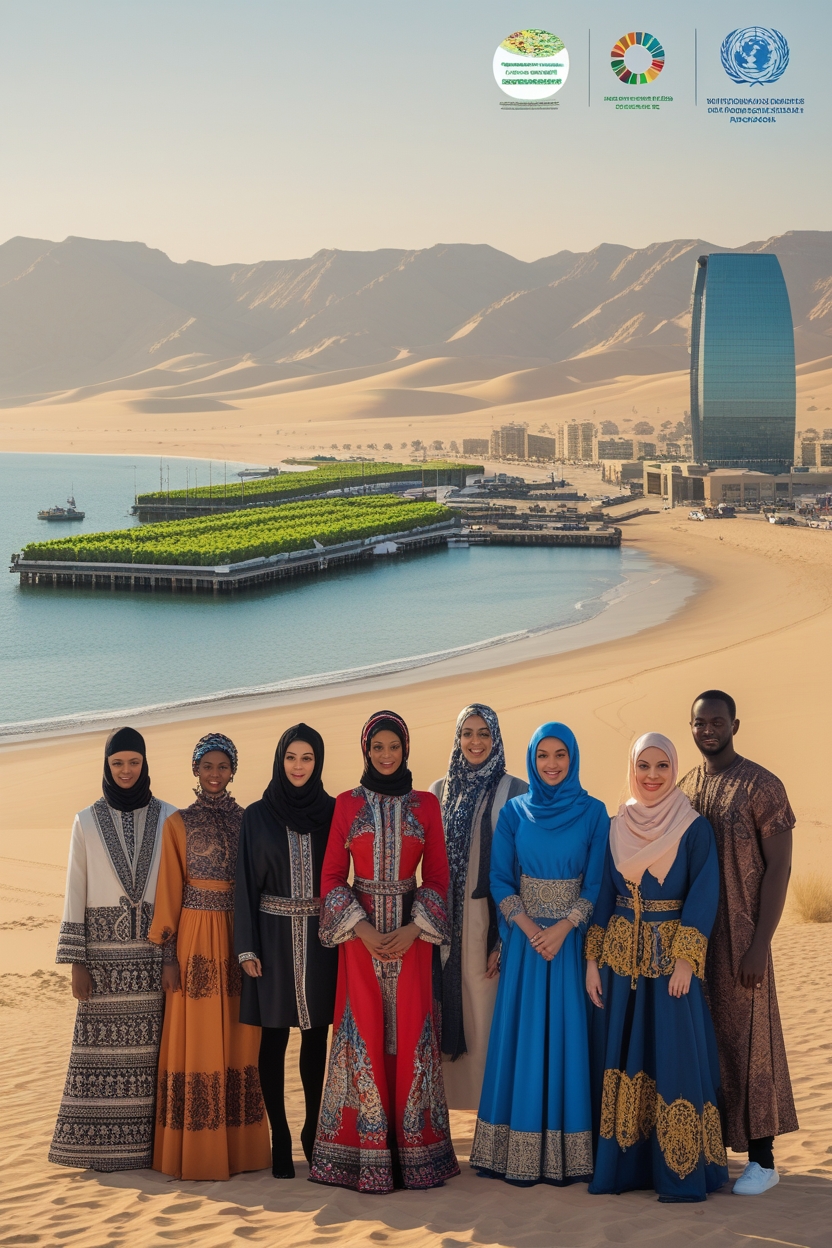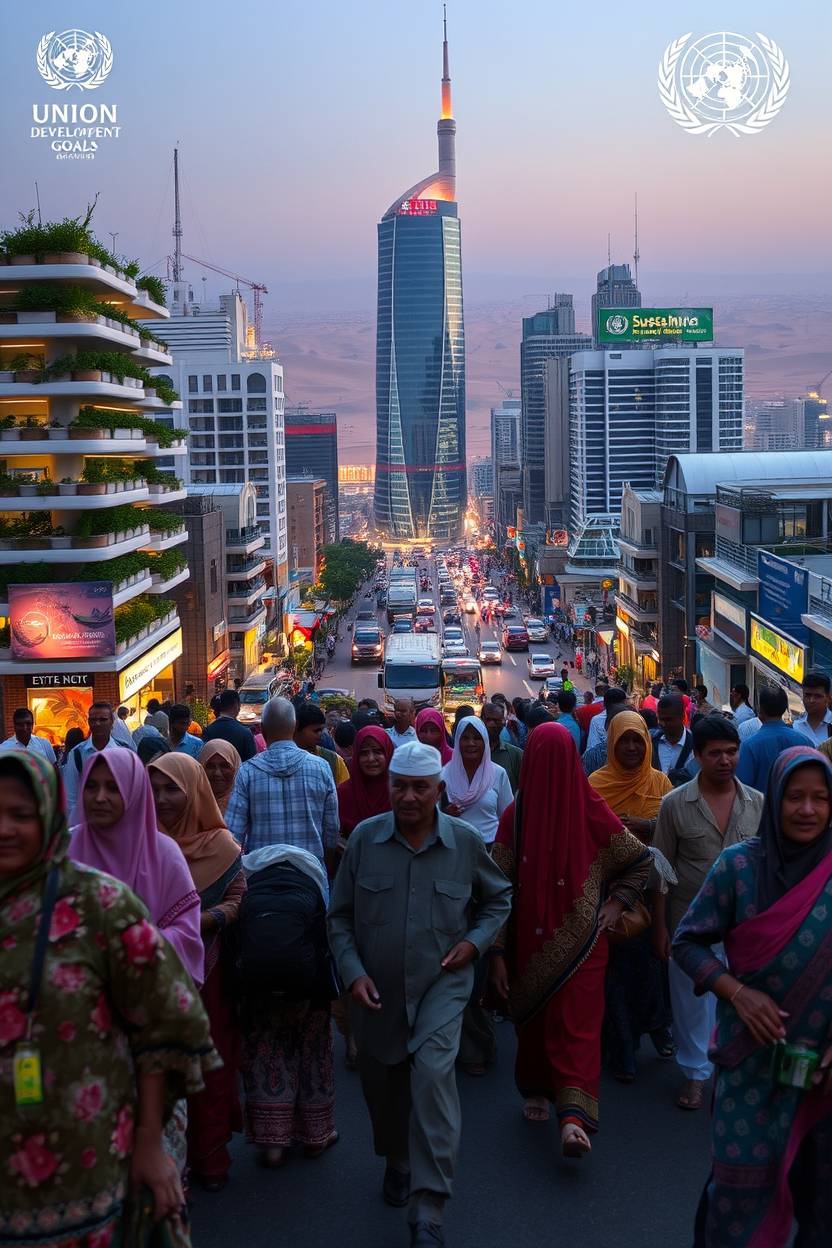
With the up coming 2025 UN Sustainable Development Goal Report in the horizon, there more work to be done. With the effects of the pandemic passing yet lingering impact, how does the global community progress forward. The economy is severely impacted with parallel yet polarizing events; A.I. & Tariffs, Ukraine & Russia, Western Europe & Central Africa, and Israel & Iran. There are, however, opportunities to pivot towards such as; 2025 Osaka World Expo & UN International Year of Cooperatives. This is part 1 of 2 of this series.

The latest findings reveal a pressing challenge in global advancement. Progress toward the sustainable development goals has slowed significantly, with only 17% of targets currently on track. This signals a need for urgent action.
Funding declines have worsened the situation. Contributions to development programs dropped by $9 billion in 2023. Despite this, many nations report better coordination with international bodies, showing potential for improvement.
Efforts like the UN80 initiative aim to streamline operations. The focus remains on tailored solutions for different regions. Upcoming discussions in Sevilla will address financing gaps and systemic changes needed to accelerate progress.
Overview of the 2025 SDGs Report: A Development Emergency
Global development faces a critical juncture as new data shows widespread stagnation. Nearly 30% of sustainable development targets now lag behind, with some regions regressing. Climate crises and funding shortfalls amplify these challenges, pushing the 2030 deadline further out of reach.
Key Findings from the Secretary-General’s Address
Extreme poverty rose by 100 million since 2019, reversing years of gains. Gender equality efforts also stalled, with 129 million girls out of school globally. The pandemic’s ripple effects continue to disrupt timelines, particularly in developing countries.
The State of Global Progress: Stagnation and Regression
Regional disparities are stark. While wealthier nations report incremental progress, lower-income regions struggle with systemic barriers like debt and climate disasters. The table below contrasts key metrics:
| Region | Poverty Reduction | Education Access | Climate Resilience |
|---|---|---|---|
| North America | +8% | 94% enrollment | Moderate |
| Sub-Saharan Africa | -5% | 63% enrollment | Low |
Efforts like the Resident Coordinator system now support 160+ countries, improving policy alignment. Yet, funding gaps persist despite $592 million in operational savings last year. Without urgent action, the 2030 goals risk becoming unattainable.
Implications of the SDGs Report 2025 for Global Development

Humanitarian crises deepen as development efforts falter. Over 820 million people now face chronic hunger—a level unseen since 2005. Meanwhile, developing countries grapple with a $4 trillion annual funding gap, slowing progress toward sustainable development goals.
Humanitarian and Economic Impacts
The debt crisis in low-income nations hit $860 billion in 2024, crippling social programs. “When budgets shrink, schools and hospitals close first,” notes a World Bank economist. Energy access remains uneven, with 600 million lacking electricity—a barrier to economic social growth.
Cambodia’s poverty rate dropped 50% since 2009 through localized solutions. In contrast, Sweden struggles with sustainable consumption despite high GDP. Such disparities reveal the need for tailored solutions.
Challenges in Poverty, Hunger, and Climate Action
Climate change intensifies poverty cycles. Floods and droughts displace 20 million yearly, per UN data. The private sector could bridge gaps—blended financing models unlocked $12 billion for clean energy in 2023.
“Gender parity may take 300 years at current rates.”
UN Women
Digital connectivity offers hope. Mobile banking in Kenya lifted 2% of households from poverty. Yet systemic change requires stronger support from governments and international organizations.
Funding Shortfalls and Systemic Consequences
Financial support for global development faces steep declines, threatening critical programs. Core contributions to agencies dropped to 16.5%, with some receiving only 12%. This 16% yearly decrease strains developing countries, where economic social programs rely on stable funding.
Declining Contributions to the Development System
The $9 billion reduction in 2023 forced cuts to health and education initiatives. Pooled funding mechanisms, vital for crises, now cover just 40% of needs. “When core funding shrinks, entire communities lose lifelines,” notes a member states representative.
- 12% funding leaves agencies unable to scale proven solutions.
- Debt burdens in developing countries divert resources from development.
- ECOSOC’s analysis reveals a $4 trillion annual gap for SDG implementation.
The Funding Compact and Unmet Targets
The Compact’s 30% target remains unmet, despite 83% of donors praising UN collaboration. The General Assembly’s $53 million allocation for Resident Coordinators helps, but broader reforms are needed. The system requires:
- Debt relief under the Pact for the Future.
- Private sector partnerships to bridge gaps.
- Stronger commitments from member states.
Without urgent action, the department economic warns of irreversible setbacks in social affairs and climate resilience.
Reforms and Innovations: Pathways to Accelerate Progress

Innovative reforms are reshaping how global development efforts accelerate progress. The UN80 initiative and Resident Coordinator System exemplify this shift, targeting inefficiencies and localizing solutions. These changes aim to bridge gaps in the 2030 agenda.
The UN80 Initiative and Efficiency Gains
The UN80 mandate review has optimized programs, cutting redundancies and saving $592 million. Shared services reduced travel costs by 30%, freeing funds for critical development goals. A new evaluation office ensures accountability across the system.
“Streamlining operations lets us deliver faster where it matters most.”
UN Development Group
Key reforms include:
- Digital transformation for real-time SDG monitoring.
- Scaling successful local models through country teams.
- Private sector partnerships to enhance data-sharing.
Resident Coordinator System’s Role in Local Impact
87% of host governments report better coordination due to Resident Coordinators. In Rwanda, integrated policies boosted clean energy access by 40%. The table below highlights regional impacts:
| Region | Policy Integration | Outcome |
|---|---|---|
| Latin America | Education reforms | 15% enrollment rise |
| Southeast Asia | Climate resilience | 200K homes flood-proofed |
Challenges remain, like uneven economic growth and framework gaps. Yet, these efforts prove tailored solutions drive tangible change.

United Nations SDGs Report 2025 Implications, Consequences, and Anticipations
New financial mechanisms emerge as traditional funding falls short of needs. The Pact for the Future, endorsed by 89 member states, introduces debt relief for 40+ nations. This aligns with the 2030 agenda, targeting $500 billion annually through the SDG Stimulus.
Member States’ Commitments and the Pact for the Future
Debt swaps now link repayment to sustainable development goals. For example, Ecuador redirected $1.6 billion to conservation programs. The General Assembly’s blueprint prioritizes:
- Climate action via emissions-linked bonds.
- Gender-responsive budgeting in 62% of member states.
- AI-driven audits to track commitments.
The Role of Private Sector and International Organizations
The private sector contributed $268 million to the Joint SDG Fund, financing 236 programs. At the New York Forum, 14 side events showcased partnerships like:
- Blue economy models protecting marine ecosystems (Goal 14).
- Blockchain platforms for transparent Goal 5 financing.
“Businesses must move beyond CSR to core operational change.”
ECOSOC Advisory Group
International organizations like the World Bank now blend grants with impact investing. This shift reflects the urgency of the 2030 agenda.
Anticipating the 2030 Deadline: Risks and Opportunities

Global temperatures have risen 1.1°C since the pre-industrial era, creating urgent challenges for sustainable development. This warming intensifies droughts, floods, and migration pressures—directly impacting progress toward the 2030 deadline. Developing nations now require 7% annual growth to achieve targets, a rate triple the current average.
Climate Change and Interconnected Challenges
The IPCC warns that every 0.5°C increase could displace 50 million more people by 2030. These shifts strain urban infrastructure, complicating Goals 11 (sustainable cities) and 4 (quality education). “Climate migration overwhelms schools and hospitals first,” notes a Nairobi Summit delegate.
Key interaction points:
- Rising seas threaten coastal countries‘ food systems (Goal 2)
- Heatwaves reduce outdoor work capacity (Goal 8)
- Biodiversity loss undermines health targets (Goal 3)
Diverging Paths: Developed vs Developing Nations
Finland leads the SDG Index with 86% target achievement, while the United States ranks 46th. This gap reflects contrasting approaches:
| Factor | Finland | United States |
|---|---|---|
| Renewable Energy | 43% of total | 20% of total |
| Education Equity | 98% enrollment | 89% enrollment |
| Carbon Footprint | 8.3 tons/capita | 14.7 tons/capita |
For developing countries, technology transfer offers hope. Kenya’s geothermal partnerships show how knowledge sharing can accelerate change. The Nairobi Summit secured $4 billion for such initiatives, targeting:
- Solar microgrids for 10 million households
- AI-driven crop monitoring systems
- Green workforce training programs
“North-South collaboration must shift from aid to mutual learning.”
Global Development Institute
With six years remaining, these solutions could redefine progress—if implemented at scale.

Conclusion: A Call to Action Amidst a Development Emergency
The world stands at a crossroads. With the 2030 agenda deadline approaching, collective action is non-negotiable. The Secretary-General’s “development emergency” declaration underscores the urgency.
Recent progress shows potential. The Joint SDG Fund mobilized $5 billion for critical initiatives. Youth-led projects through Future Rising Fellows prove local solutions drive impact.
Key steps forward:
- Scale support for decentralized implementation
- Align private sector commitments with monitoring frameworks
- Leverage real-time data to track gaps
Every stakeholder must work together—governments, businesses, and communities. The time for incremental development has passed. Bold moves now will define our shared future.

Key Takeaways
- Global development efforts face major setbacks, with most targets lagging.
- Funding reductions have created additional hurdles for progress.
- Improved collaboration offers hope for more effective solutions.
- Tailored approaches are essential for different countries’ needs.
- Upcoming conferences will tackle financial and structural challenges.
